Hannah Orthodontics is proud to offer speech-language pathology and myofunctional therapy services to our patients. Proper training of your tongue and lips to function properly will not only improve your orthodontic results but also reduce the chances of your teeth moving after they are corrected.
If our doctors detect habits such as tongue thrusting, deviant swallowing, or reverse swallowing, they will refer you to our in-house therapist for Myofunctional Therapy (tongue, lip, and swallow training). The initial consultation lasts approximately 20 minutes, with additional visits taking around 10 minutes each. As part of our commitment to beautiful smiles and bites, we offer this service free of charge—a service that could otherwise be quite expensive outside our office!
Meet Our Myofunctional Therapist
Maria Heid
Maria works with our patients as a Myofunctional Therapist and earned her Master’s in Speech-Language Pathology from the University of Kansas. She also works in private practice in Miami and Johnson counties.
Tongue Thrust, Deviant Swallow, Reverse Swallow
Your doctor may have informed you that you or your child have an oral myofunctional disorder (OMD). Like many, you might not be familiar with this term. OMD refers to a pattern involving the oral and orofacial muscles that can interfere with normal growth, development, or function of the structures in the mouth and face.
Tongue thrust, sometimes called reverse swallow or deviant swallow, is one of these patterns. It describes an atypical swallow where the tongue moves forward or sideways in an exaggerated way during swallowing or speech. At rest, the tongue usually sits low and forward in the mouth. All babies are born with this reversed swallow to protect their airway, but by ages 5 to 7, a more efficient swallow pattern typically develops.
Signs of Tongue Thrust
Several factors are associated with tongue thrust. These include but are not limited to:
- Thumb/finger sucking, lip biting, or teeth grinding
- Messy eating habits
- Tongue is visible between the teeth or at the front of the mouth during swallowing
- Tongue resting on the bottom lip
- The tongue is more visible at the front of the mouth during speech
- Early loss of baby teeth
- Prolonged use of bottles or sippy cups
- Respiratory difficulties, allergies, or enlarged tonsils/adenoids
- Family history of similar issues
Normal Swallow vs. Tongue Thrust Swallow
Normal Swallow:
- Teeth and lips are sealed and relaxed
- The tongue tip presses against the roof of the mouth (the hard palate)
- The front of the tongue slopes downward to help push food into the throat
- The tongue moves in a wave-like motion when swallowing
Tongue Thrust Swallow:
- The tongue moves forward or sideways in an exaggerated manner
- Teeth and lips may not fully seal during swallowing
Consequences of Tongue Thrust
We swallow around 1,500-2,000 times a day, and the tongue can exert 1 to 6 pounds of pressure on the oral structures. Left untreated, tongue thrust can contribute to:
- Slowing down or even causing relapse of orthodontic treatment
- Speech issues
- Periodontal (gum) problems
- Unpleasant appearance while chewing or eating
- Soreness in the tongue and teeth
- Temporomandibular Joint (TMJ) problems
- Headaches
- Breathing difficulties or allergies
Treating Tongue Thrust
While you cannot self-diagnose tongue thrust, there are simple, everyday exercises that can help strengthen oral muscles. However, if you or your child shows signs of tongue thrust, it’s essential to seek the expertise of a speech-language pathologist or oral motor therapist, who can provide a more specific and effective treatment program.
References
- American Speech-Language-Hearing Association – www.asha.org
- Dentistry.com – www.dentistry.com
- Super Duper Publications – www.superduperinc.com



